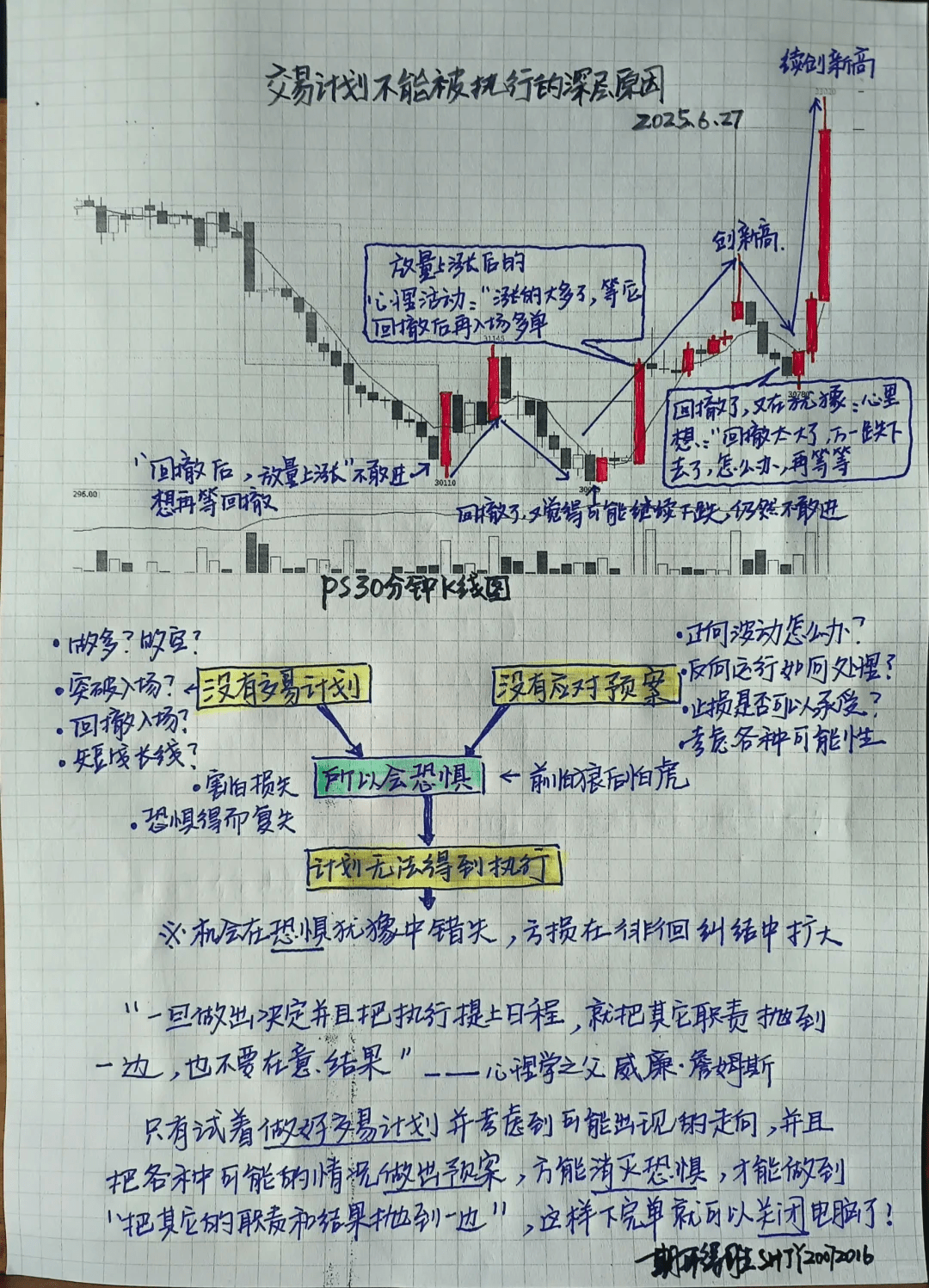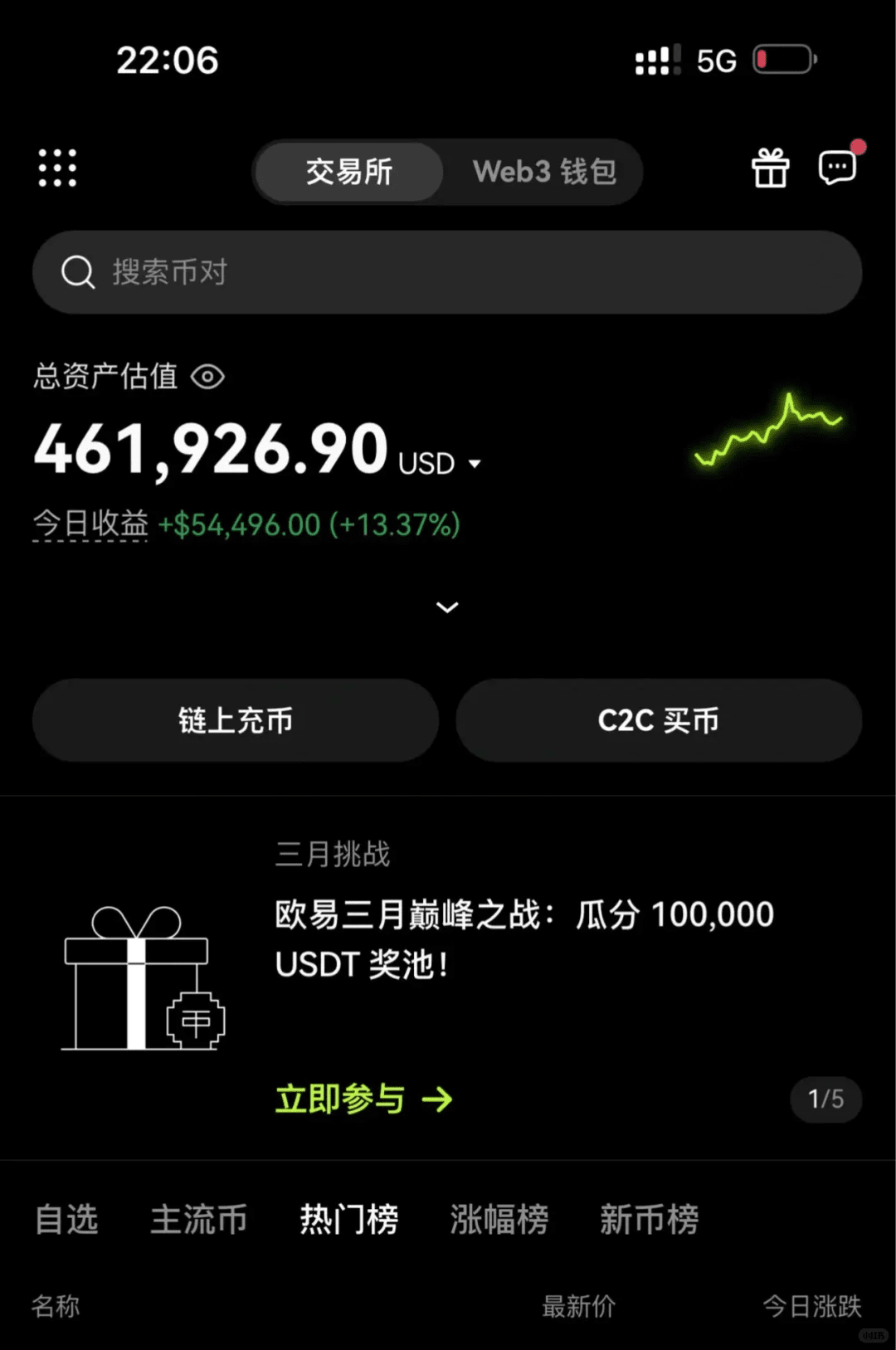The key to rolling positions is not making huge profits, but living long. Execute details accurately: resist the urge, use profits, adjust stop-losses, and avoid greed. Even if you don't roll 200 times, you can survive long in the cryptocurrency space, and living long will eventually lead to opportunities.
Some people roll 5,000 into 1 million in half a year, while others lose 500,000 in a day — the difference lies not in luck, but in the execution of rolling position tactics. The core conclusion of four years of practical experience is two words: 'Guard' and 'Ruthless.'

1. Strategic cognition: Why can rolling positions amplify returns?
The underlying mathematical logic of compound interest
The essence of rolling positions isto use profits to replace principal in bearing risks. Assuming that 50% of profits are reinvested after each profit, if the win rate for each trade is 50% and the profit-loss ratio is 2:1, stable compounding can theoretically be achieved. For example:Initial capital of 10,000 yuan, first profit of 50% (5,000 yuan), extract the principal and continue trading with 5,000 yuan of profit.
If the second loss is 25% (1,250 yuan), the remaining 3,750 yuan is still higher than the initial principal.
If the third profit is 50% (1,875 yuan), total profit reaches 5,625 yuan, a growth of 56% compared to the initial principal.
This strategy limits the risk of a single trade within the profit range throughthe principal protection mechanism, avoiding permanent loss of principal due to a single mistake.
The core advantage of trend trading
is that the cryptocurrency market is in a consolidation phase 70% of the time and in a one-sided trend 30% of the time. The rolling position strategy's 'wait' and 'roll' perfectly match this characteristic:90% time lurking: During consolidation, use small positions to test (e.g., 1% of capital) to capture breakout signals, avoiding frequent stop-losses that consume capital.
10% time harvesting: When the trend is confirmed (e.g., Bitcoin breaks the 200-day moving average with volume doubling), use profits to gradually add positions, achieving explosive gains during trend continuation.
2. Tactical execution: Four steps to build a mechanical trading system
1. Entry rules: Triple filtering mechanism to lock in high win-rate opportunities
Technical analysis:
Usemulti-timeframe resonancestrategy, for example:Breakthrough key resistance levels on the daily chart (e.g., previous high + 3%);
4-hour MACD golden cross and OBV indicator hitting a 30-day high;
1-hour volume exceeding 1.5 times the past 20-day average for three consecutive K-lines.
(referencing the combination application of OBV and moving averages)
News analysis:
Focus onthe resonance between policy and on-chain data. For example:When the expectation of interest rate cuts by the Federal Reserve rises, observe whether the USDT over-the-counter premium rises simultaneously (reflecting capital inflow);
Three months before Bitcoin halving, monitor changes in miner holdings (e.g., if Glassnode data shows a decrease in miner net outflow).
Capital situation:
Utilizecapital flow indicators (such as net flow of exchanges, perpetual contract funding rates) to judge the direction of main forces. When the funding rate is below -0.01% for three consecutive days and the net outflow from exchanges increases, it indicates that shorts may be overcrowded and a bullish trend may reverse.
2. Position management: Pyramid addition and dynamic risk control
Initial position:
The initial position should not exceed 5% of total funds and must strictly adhere to1% risk principle (i.e., single stop-loss should not exceed 1% of the principal). For example, if the principal is 100,000 yuan, the stop-loss for a single trade should not exceed 1,000 yuan.Position addition rules:
Useinverted pyramid position addition method:When the first profit reaches 10%, increase the position by 2% of the principal;
When profits reach 20%, increase the position by another 3% of the principal;
Total position should not exceed 20%, with 80% of funds kept as risk reserves.
(referencing the 'half-position snowball' strategy for position allocation)
Dynamic stop-loss:
As floating profits increase by 20%, move the stop-loss line to 80% of the current price. For example:Buying ETH for 10,000 yuan, with a stop-loss set at 9,700 yuan (3%);
If the price rises to 12,000 yuan (floating profit of 20%), the stop-loss moves up to 11,400 yuan (95% of the current price);
If the price rises to 15,000 yuan (floating profit of 50%), the stop-loss moves up to 13,500 yuan (90% of the current price).
3. Profit taking strategy: Batch harvesting and profit rebalancing
Tiered profit taking:
When floating profits reach 30%, take profit on 30% of the position;
When floating profits reach 50%, take profit on another 40% of the position;
Retain the remaining 30% of the position until a trend reversal signal appears (e.g., a death cross on the daily MACD).
Profit reinvestment:
After each profit taking, convert 50% of the profits into USDT stablecoin, and continue to invest the remaining 50% in trend trading. For example:Initial capital of 10,000 yuan, first profit of 50% (5,000 yuan), withdraw 2,500 yuan in stablecoin, and continue trading with the remaining 2,500 yuan profit.
If subsequent trades incur losses, stablecoins can be used as additional capital; if profitable, continue to repeat this process.
4. Risk hedging: Responding to black swan events
Cross-market hedging:
When holding a BTC long position, one can buy ETH short contracts (ratio 1:0.3) to hedge sector risk. For example:Hold BTC spot worth 100,000 yuan while shorting ETH perpetual contracts worth 30,000 yuan.
If BTC rises by 10% and ETH falls by 5%, the total profit is 10% * 100,000 - 5% * 30,000 = 8,500 yuan.
Option protection:
When holding floating profits exceed 50%, buyPut option (strike price at 80% of the current price) as insurance. For example:Buying ETH for 15,000 dollars, spending 500 dollars (5% of profits) to buy a 1-month put option with a strike price of 12,000 dollars.
If ETH falls to 10,000 dollars, the option profit ((12,000 - 10,000) * number of contracts) - option fee can cover most losses.
3. Anti-fragile design: Defensive system to withstand bull and bear markets
Capital curve management
Drawthe net asset value curveand set up a forced rest mechanism:When the capital curve falls for three consecutive weeks and the drawdown exceeds 20%, pause trading for one month;
When the capital curve breaks through historical highs, withdraw 20% of profits into fiat currency.
Market cycle adaptation
Early bull market (e.g., Bitcoin breaks the 200-day moving average): adopt aggressive strategy, increase position to 50%, focus on altcoins;
Late bull market (e.g., market sentiment index > 90): shift to conservative strategy, reduce position to 20%, mainly hold Bitcoin and stablecoins;
Bear market: adopt grid trading (e.g., buy 1% position every 5% drop) and participate in DeFi mining for stable income.
Tool-based execution
Usequantitative trading tools (e.g., Bitget's strategy bot) to automatically execute rules:Set 'break through the 200-day moving average + volume > 2 times the 30-day average' to trigger a buy;
Automatically close positions and send SMS notifications when stop-loss/profit-taking conditions are met;
Generate daily trading reports, summarizing win rates, profit-loss ratios, maximum drawdowns, and other key indicators.
4. Practical taboos: Avoid the five major traps that newcomers easily fall into
Counter-trend position addition: In a downtrend, do not easily add to positions even if the price is halved, unless there is a clear bottom signal (e.g., RSI continuously below 20 for 3 days with bullish divergence).
Excessive leverage: Contract leverage should not exceed 10 times, and single trade risk should not exceed 2% of account net value. For example, with a principal of 100,000 yuan, single stop-loss should not exceed 2,000 yuan.
Emotional trading: Establish a trading decision checklist, listing entry, position addition, stop-loss, and profit-taking conditions one by one, and resolutely refrain from trading when conditions are not met.
Ignoring market structure: When Bitcoin's dominance (MVRV ratio) exceeds 60%, reduce altcoin positions; when the total locked value (TVL) in DeFi increases by 30% month-on-month, increase allocation of related coins.
Lack of contingency plans: Before each position opening, clarify the worst-case response plan, for example:
If the price reverses by 5%, do you have capital for additional positions?
If holding overnight, have you set a trailing stop-loss?
If facing extreme market conditions (e.g., a 51% attack), how to quickly close positions?
5. Long-term survival rules: Underlying logic more important than strategy
Probabilistic thinking:
Accept the fact that 'each trade has only a 50% win rate' and achieve overall profitability throughthe law of large numbers. For example:If trading 20 times a month, with a 50% win rate and a 2:1 profit-loss ratio, the theoretical monthly profit is (10 profitable trades at 2R) - (10 losing trades at 1R) = 10R (R being single trade risk).
If R = 1% of capital, the monthly profit is 10%, resulting in an annualized return of 159% (compound interest calculation).
Capital efficiency:
Prioritize selectinghigh liquidity and high volatilitycoins (e.g., Bitcoin, Ethereum), avoiding wasting time on low liquidity coins (e.g., altcoins with a market cap below 100 million dollars).Cognitive iteration:
Regularly review trading records, usingthe PDCA cycleto optimize strategies:Plan: Set trading goals for the next month (e.g., improve profit-loss ratio to 2.5:1);
Do: Trade strictly according to rules, record every operation;
Check: Analyze win rates, profit-loss ratios, maximum drawdowns, and other indicators;
Act: Correct vulnerabilities in the trading system (e.g., optimize entry signal filtering conditions).
The essence of the rolling position tactic is to replace emotions with discipline, transforming market fluctuations into quantifiable profits. It requires traders to wait for opportunities like a sniper, execute rules like a robot, and handle risks with the calmness of a doctor. In this process, surviving is more important than making quick money — as long as you survive long enough in the market, the compounding effect will naturally turn small capitals into snowballs. Remember: you cannot predict the market, but you can control yourself.

If you currently feel helpless, confused, or want to learn more about the cryptocurrency space and first-hand cutting-edge news, click on my avatar to follow me, and you'll no longer be lost! Clear market trends give you the confidence to operate. Stable profits are far more practical than fantasizing about getting rich.